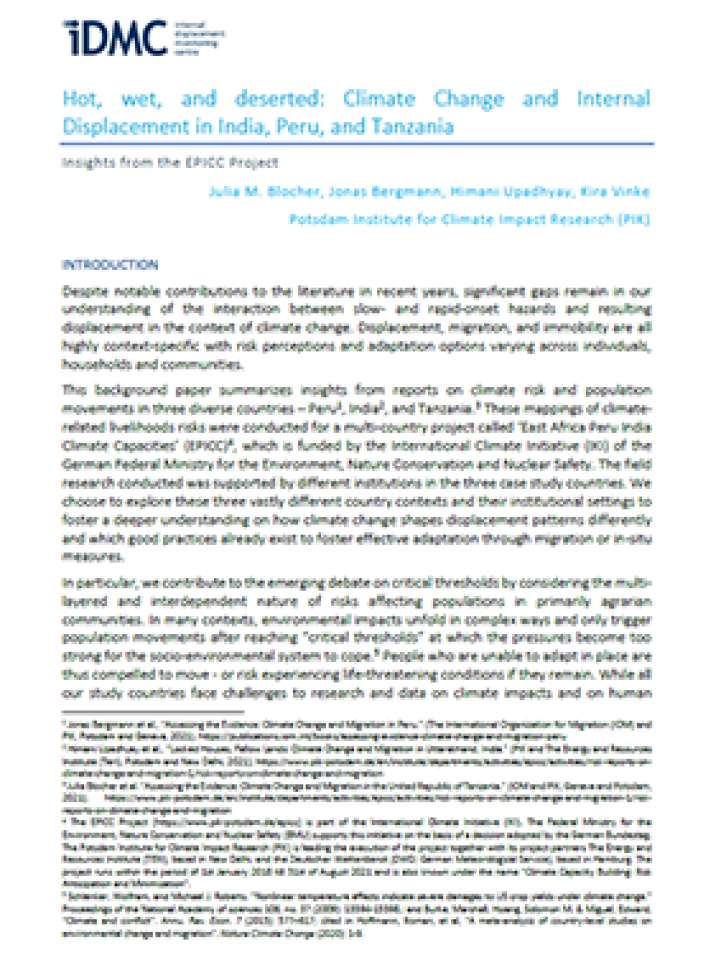Hot, wet, and deserted: Climate change and internal displacement in India, Peru, and Tanzania
This report discusses that despite notable contributions to the literature in recent years, significant gaps remain in the understanding of the interaction between slow-and rapid-onset hazards and resulting displacement in the context of climate change. Displacement, migration, and immobility are all highly context-specific with risk perceptions and adaptation options varying across individuals, households and communities. This background paper summarizes insights from reports on climate risk and population movements in three diverse countries –Peru, India, and Tanzania. These mappings of climate-related livelihoods risks were conducted for a multi-country project called ‘East Africa Peru India Climate Capacities’ (EPICC), which is funded by the International Climate Initiative (IKI) of the German Federal Ministry for the Environment, Nature Conservation and Nuclear Safety. The field research conducted was supported by different institutions in the three case study countries.
The report chooses to explore these three vastly different country contexts and their institutional settings to foster a deeper understanding on how climate change shapes displacement patterns differently and which good practices already exist to foster effective adaptation through migration or in-situ measures. In particular, it contributes to the emerging debate on critical thresholds by considering the multi-layered and interdependent nature of risks affecting populations in primarily agrarian communities. In many contexts, environmental impacts unfold in complex ways and only trigger population movements after reaching “critical thresholds” at which the pressures become too strong for the socio-environmental system to cope. People who are unable to adapt in place are thus compelled to move-or risk experiencing life-threatening conditions if they remain. While all the study countries face challenges to research and data on climate impacts and on human2mobility, it uses existing datasets and literature to make the analysis.
The report aims to improve evidence for policymaking and programming through concrete examples of good practice as well as of barriers to effectively addressing risks related to displacement. The approach is sensitive to different geographic and temporal scales of movement, considering both gradually developing hazards (like persistent drought) and rapid-onset hazards (like extreme weather events) as well as the interactions between them. The key learnings from each of the countries represent different facets of the complex relationship between climate change and population movements under different warming scenarios.
Explore further
